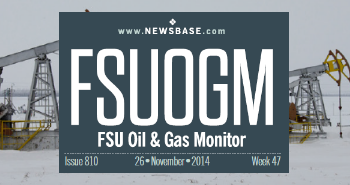Gazprom targets 50% climb in 2021 earnings, discusses project financing

Russian gas supply giant Gazprom is targeting a 50% upswing in EBITDA in 2021 on the back of soaring demand for gas in Europe.
Gas prices on European spot markets recently exceeded $360 per 1,000 cubic metres according to Gazprom, which is unusually high for any time of year but especially summer, when demand is typically low. Demand has picked up this year as a result of the post-coronavirus (COVID-19) economy recovery, but supply remains tight following reductions made during the pandemic.
Thanks to these conditions, Gazprom expects to generate $30bn in EBITDA in 2021, compared with $20.4bn in 2020, the company’s deputy chairman, Famil Sadygov, said at a press conference on June 16.
The company suffered a 29% decline in EBITDA last year as the pandemic took its toll on gas demand in Europe. But this year has been quite different for Gazprom, with the company producing RUB701bn ($9.6bn) in the first quarter, up 38% year on year.
Financing plans
Gazprom is also looking to attract project financing to ease its debt burden, Sadygov continued.
The company’s net debt to EBITDA ratio grew to 2.6 in 2020, up from 1.4 in the previous year and 0.8 in 2018. But the ratio would have exceeded 3 if not for the measures Gazprom undertook to improve its financial position amid the pandemic, according to Sadygov.
The target for this year is a ratio of 1.6-1.7, the executive continued. Gazprom has reduced its initial borrowing plan for the year by RUB100bn ($1.4bn) to RUB411bn, he said, but the company is aiming to issue Eurobonds soon, possibly in euros, US dollars and Swiss francs. It also intends to issue RUB150bn in perpetual bonds before the end of the year.
The Nord Stream 2 project is fully funded, Sadygov added. Gazprom had originally sought to form a consortium with European partners Engie, OMV, Royal Dutch Shell, Uniper and Wintershall Dea to share the pipeline’s €9.5bn ($11.3bn) equally. Instead, Gazprom covered half of cost itself and its European partners supplied it with loans for the rest.
Nord Stream 2 is now nearing completion, with Russian President Vladimir Putin hailing the completion on June 4 of one of the pipeline’s two strings. But there is a lot of uncertainty about when Nord Stream 2 will start pumping gas commercially and when it will reach its 55bn cubic metre per year capacity.
Gazprom is planning to raise financing for the development of its joint project with Germany’s Wintershall Dea by the end of 2022, Sadygov said. The pair are developing deep Achimov layers of the Urengoiskoye field in Western Siberia together, having recently commissioned new phases.
Sadygov also said Gazprom was planning to raise financing in 2020 for the Ust-Luga gas processing complex in north-west Russia. The company held a formal ground-breaking ceremony for the project in late May, despite cancelling an engineering, procurement and construction (EPC) contract three months earlier that had been awarded to Russia’s Nipigaz. It is considering hiring Germany’s Linde as a replacement.
“Financial consultants – VEB and Gazprombank – are preparing models and final options for financing opportunities,” Sadygov said, adding that the most likely option was a 30:70 split between equity financing and borrowed funds.
News that funding will not be finalised until next year casts doubt on whether the project will be realised on schedule. Gazprom had originally envisaged bringing the facility on stream in 2023.
Gazprom is also considering financing options for the Tambeyskoye, Layavozhskoye and Urengoyskoye fields in Western Siberia. Tambeyskoye will eventually supply gas to the Ust-Luga complex.
Despite the focus on debt management, Gazprom officials did not discuss any divestments and Sadygov ruled out the company undertaking a secondary public offering or an additional share issue. He also said the company was not currently intending to reduce its 9.99% stake in Russia’s biggest LNG exporter Novatek, but said the option could be on the table when market conditions became more favourable.


Follow us online